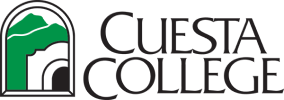
Program Summary
WELDING TECHNOLOGY STRUCTURAL - Certificate of Specialization
2014 - 2015, 2015 - 2016, 2016 - 2017, 2017 - 2018, 2018 - 2019, 2019 - 2020, 2020 - 2021, 2021 - 2022, 2022 - 2023, 2023 - 2024, 2024 - 2025
Certificate of Specialization, Welding Technology Structural
Career Opportunities
Required Course (3 credits)
Units: 3.0
WELD 280A
STRUCTURAL STEEL WELDING CERTIFICATION
3.0
Total: 3.0
Program Outcomes
Demonstrate proper safety practices when working in a
welding environment
SLO i -Successful completion of safety exam. Completion of industry standard Job
Safety Analysis (JSA) forms as they pertain to all equipment and procedures in
the shop. Demonstrate correct use of Personal Protective Equipment (PPE) on a
daily basis.
-Student Survey
Demonstrate welding skills sufficient to meet industry journeyman welder standards.
•Interpret welder certification acceptance criteria from the AWS D1.1 Structural Steel welding code.
•Prepare test plates per the Prequalified Welding Procedures detailed in the code.
•Perform welding procedures to include vertical (3G) and overhead (4G) positions in both the Shielded Metal Arc and Flux Core Arc welding processes.
•Analyze completed test plates utilizing non destructive visual testing for acceptance of rejection per code criteria.
•Measure, layout, cut and properly prepare test coupons from plate for destructive testing as per code requirements.
•Perform destructive bend tests to determine acceptance or rejection for certification.
•Apply visual testing procedures and measurement tools, when necessary, to assess bend specimens for acceptance or rejection for welder certification.
•Perform basic maintenance on various equipment so as to maintain high productivity
•Apply various cutting processes i.e. OFC, CAC-A and PAC to fabrication. Should include track burning and automated systems.
SLO 1:
-American Welding Society D1.1 Structural Welding Certification test with E7018 electrodes and the FCAW process in the vertical and overhead positions.
-Student Survey
Apply integrated knowledge with incremental skill improvement resulting in functional application of welding techniques.
•Select appropriate welding processes for specific applications.
•Understand primary power requirements, duty cycles and capabilities of various welding power supplies.
•Ability to properly set up various welding equipment including electrical arc and gas welding apparatus’.
•Select appropriate electrodes and/or filler metals to match the metallurgical properties of various base metals
•Analyze completed weldments from a quantifiable perspective as to the overall weld quality
•Read applicable codes , standards, equipment and repair manuals, welding procedures and safety guidelines
•Interpret and apply welding symbol information to completion of welding projects
SLO 2:
-Demonstrative weld completion and documentation of knowledge progress evaluation.
-Student Surveys.
Use proper hand, measuring and layout tools to fabricate welding projects.
•Identify the correct tool for specific job.
•Use proper tools correctly and safely.
•Read a tape measure
•Measure materials
•Calibrate equipment
•Verify accuracy of measurements
•Utilize clamps and fixtures
•Apply concepts of shrink and distortion to measurements, layout and fixturing
•Use common fabrication tools such as angle grinders, cut off saws, band saws, milling machines, etc.
SLO 3:
– Each welding course will require the completion of shop projects which incorporate the use of common fabrication tools.
-Student Survey
Apply academic skills in reading, mathematics, chemistry and physics to the application of welding skills.
•Read and interpret welding information such as weld procedure specifications, applicable codes and standards, equipment manuals and blueprints.
•Perform mathematical calculations commonly encountered in the welding environment as they apply to materials lists, job costs, measurement calculations, heat input, voltage drop, carbon equivalent calculations, wire feed speed/ amperage relationships, etc.
•Utilize basic math skills including geometry, fractions, conversions, problem solving and tolerances.
•Able to read write and communicate with supervisors, coworkers and others
SLO 4:
– Record of traditional knowledge assessments followed by hands on application to welding procedures in the laboratory to produce weldments and projects which incorporate said objectives and outcomes.
-Student Survey
Demonstrate work attributes that contribute to personal success and contribute to the goals of the company or organization for which one is employed.
•Complete job applications accurately
•Prepare resumes, cover letters and/or work portfolios
•Learn and practice interviewing skills
SLO 5:
– 90% of all students WELD 280A will submit a career portfolio that meets current industry standards. Professionalism evaluation as part of the grading procedures in each course. All students will successfully complete a safety examination and participate in Job Safety Analysis procedures.
-Student Survey